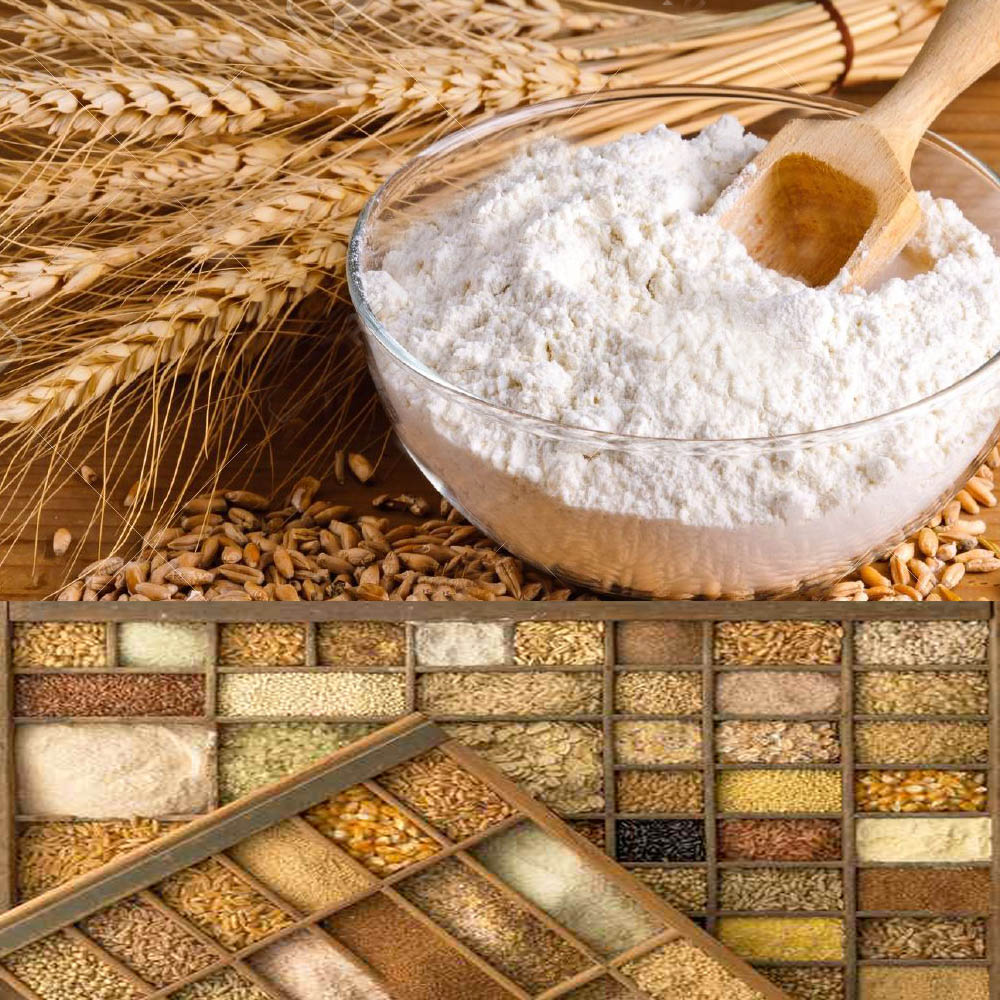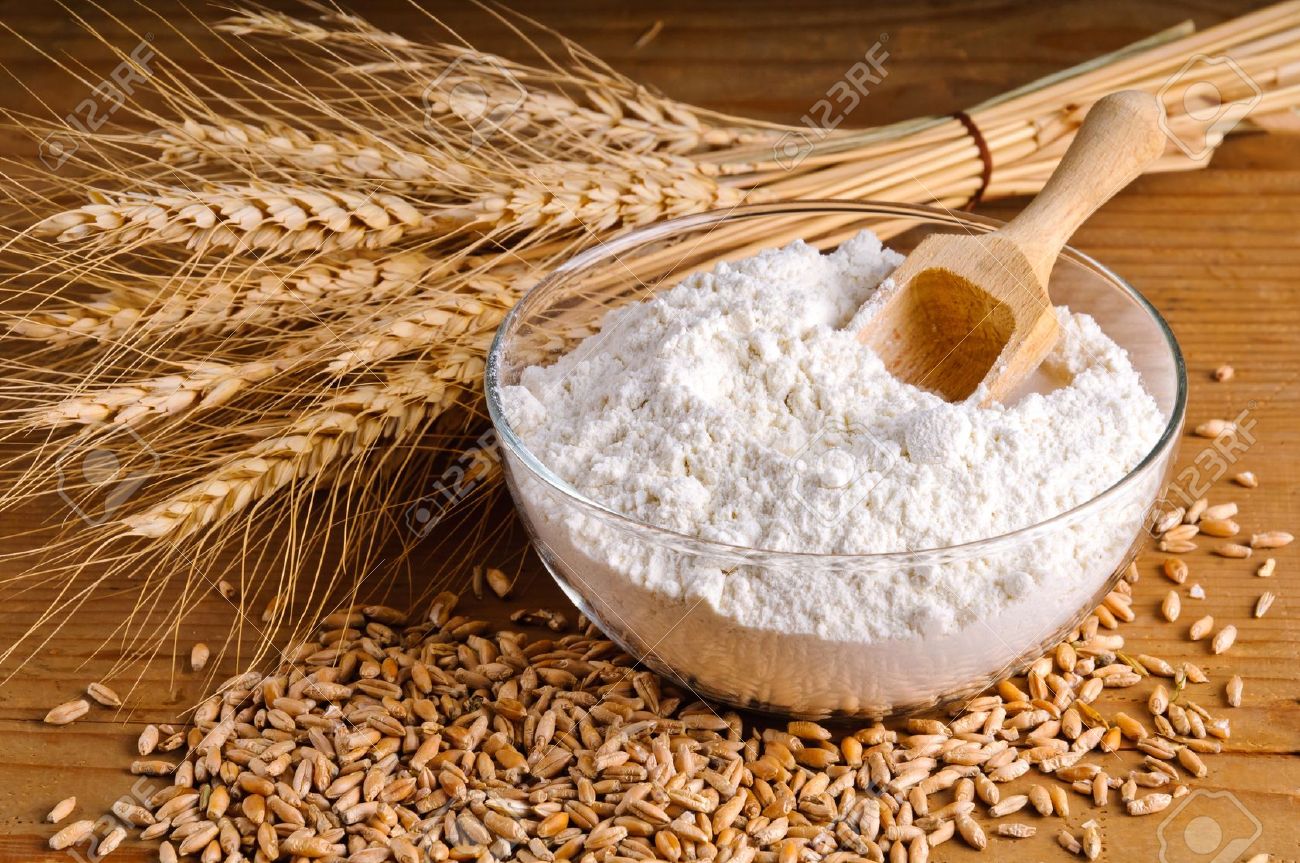

What is flour made out of?
A whole grain of wheat, sometimes called a wheat berry, is composed of three layers:
• The bran
• The germ
• The endosperm
The bran is the layer where you’ll find most of the fiber, and it’s the hard outer shell of the kernel. The germ is the nutrient-rich embryo that will sprout into a new wheat plant. The endosperm is the largest part of the grain (83 percent), making up most of the kernel, and it’s mostly starch.
White flour is made from the endosperm only, whereas whole-wheat flour combines all three parts of the wheat berry.
Old time mills ground flour slowly, but today’s mills are designed for mass-production, using high-temperature, high-speed steel rollers. The resulting white flour is nearly all starch, and even much of today’s commercially processed whole wheat flour has lost a fair amount of nutritional value due to these aggressive processing methods.
White flour contains a small fraction of the nutrients of the original grain, with the heat of the steel rollers having destroyed what little nutrients remain. But then it is hit with another chemical insult--a chlorine gas bath (chlorine oxide). This serves as a whitener, as well as an “aging” agent.
Flour used to be aged with time, improving the gluten and thus improving the baking quality. Now, it is treated with chlorine to instantly produce similar qualities in the flour (with a disturbing lack of concern about adding another dose of chemicals to your food).
Food For Thought
Strive to stick to whole unprocessed foods that are as close to their natural state as possible. If you’re going to eat grains, make sure they are at the least unbleached, whole, and organic, and eat them in the proportion that is best for your nutritional type.
https://articles.mercola.com/
For more details, see 15 Different Types of Flour and Their Properties
https://www.village-bakery.com/15-different-types-flour-properties/
The strength of the flour and index of the bread making capacity (W)
The soft wheat flour is mostly made up of starch (64-74%) and protein (9-15%). In contact with water and by mechanical action the two main proteins, glutentin and gliadin, react to form a proteinic compound known as gluten.
At the dough stage, the gluten creates inside the mass of water and flour a kind of grid capable of detaining the starches and gases that develop at the leavening stage. The properties of the dough are determined by the relative percentage of glutentin and gliadin: the first one makes it extensible, while the second makes it firm and elastic.
The strength of the flour depends on the quality of the gluten that it is capable of developing and by its subsequent ability to absorb water. The more protein there is in the grain of wheat, the more gluten will be developed in the dough.
The strength of the flour is measured in the laboratory with specific mechanical tests on the dough. W is the index of bread making capacity used to classify the flour according to its strength.
A high level of W indicates a high gluten content: this means that the flour will absorb more water and the dough will rise more slowly, because the gluten mesh will be more resistant and firm. On the contrary, the low level of W indicates a low gluten content: the flour will absorb only a small amount of water and will rise more quickly, because the glutinous shield will allow for gases to be released with greater ease, and the dough will be lighter and less compact.
The flour with W between 90 and 160 is weak flour and absorbs 50% of its weight in water. Medium strength flour has a W of between 160 and 250 and absorbs between 65% and 75% of its weight in water. The flour with W between 250 and 310 is strong flour and absorbs from 65% to 75% of its weight in water. Special flour has a W greater than 310, absorbs up to 90% of its weight in water and is often used in mixes with other flour to increase strength.
379 recipes selected, Page 1 of 19
379 recipes selected, Page 1 of 19

























